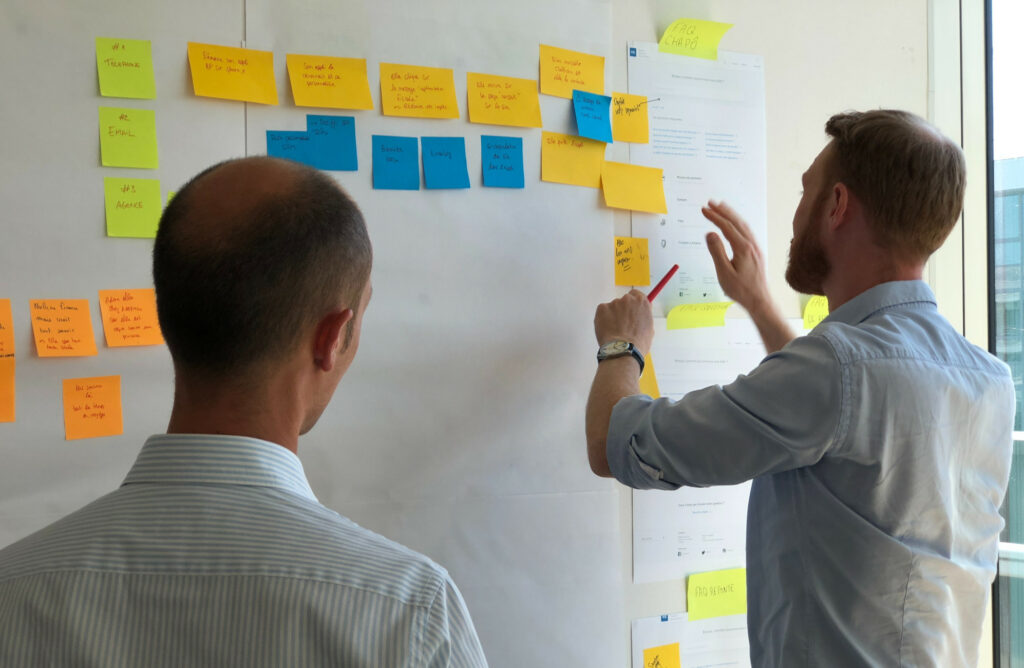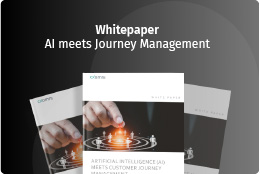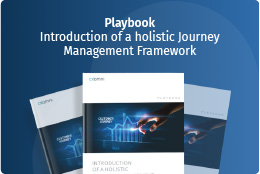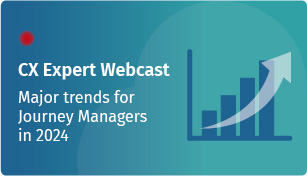The trend toward online shopping has continued steadily among consumers since 2020. Studies show: Corona-related lockdowns in particular have ensured that even more purchases are made online and that this pandemic consumer behavior will continue. B2B buyers are also increasingly becoming omnichannel shoppers. According to experts at Gartner, B2B buyers expect 59% of sales to be made online alone by 2023. These trends also have an impact on customer journey management.
What does this mean for the customer journey?
Companies may prioritize their campaigns and investments across channels – but that alone is not enough to delight customers. The key to success lies in a holistic approach. To do this, stakeholders need to understand the customer journey in detail.
For example, a customer hears about a new solution in an exchange with his peers (i.e., offline), finds out about it on comparison portals on his smartphone, and then buys the product via the provider’s website (online) or the app. In between, he may use the hotline or a chatbot. Maybe the customer gives his feedback on social media afterwards.
Therefore, companies need to know the relevance of their touchpoints. Where are the make or break points? Which touchpoints have the highest brand perception? Where might the customer re-enter if he has churned? Does he complete his transaction off- or online? How does the customer feel about his journey? With knowledge of customer feedback, user behavior, and transactional data, stakeholders can take the right actions at all relevant touchpoints to trigger and support purchase decisions. You don’t always get feedback directly related to the touchpoint. Therefore, it makes sense to cluster feedback by categories and topics and to establish a relationship to the touchpoint.
Warum wird cxomni von Forrester als ein Leader eingestuft?
To ensure that touchpoint improvements are really implemented consistently, the right workflow is essential: Insights from customer feedback, customer focus groups, workshops or customer playgrounds must be assigned to the touchpoint and measures and needs (actionable insights) prioritized on an interdisciplinary basis. This requires company-wide standards for taxonomy and terminology.
After all, customer journey management means that all those responsible for touchpoints should speak the same language and that roles are clearly defined. Knowing how the customer experiences the touchpoint can also lead to perhaps new touchpoints being created or existing touchpoints disappearing because they have lost relevance with the customer. In successful companies, for example, actionable insights are passed on to product management as requirements, so that the company’s own offering can be continuously adapted to customer needs and user behavior.
Conclusion
Despite increasing digitization, companies should not ignore the omnichannel perspective and sharpen their holistic view of actual customer behavior. It is important to aggregate all findings along the journey, to convert them into meaningful measures if necessary, to prioritize them, to assign them to the responsible stakeholders, and to make their success transparent. Then customers receive the same perfect customer experience at all touchpoints – whether offline or online – which binds them to a company in the long term.







